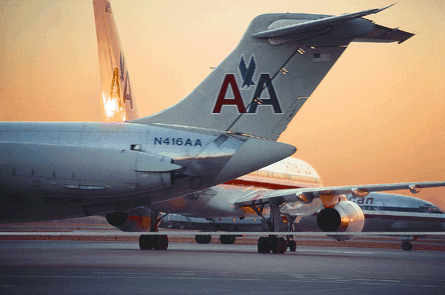The landmark order by American Airlines for 460 Airbus A320s and Boeing 737s to revamp its ageing narrowbody fleet was trumpeted by the carrier with huge fanfare on the same day that it reported a $286 million loss. This came as all its USA legacy peers remained in the black for the quarter.
American posted net losses between 2008 and 2010, while last year most of its legacy competitors were able to boast a record in some financial benchmark. US Airways, which admits its hubs have less profit-generating capabilities than its legacy competitors, recorded the second highest profit in its history last year.
Analysts at CRT Capital Group highlight that American's unit revenue growth lagged behind the industry in every region during the second quarter, noting that American's domestic unit revenues grew by 4.9% compared with 8.9% for the industry.
American took an approximate $60 million hit in revenue during the quarter, after suffering severe weather at its Dallas/Fort Worth hub and the lingering effects from the Japanese disaster in March.
 |
|---|
© American AirlinesAmerican's deal lets the sun finally set on its MD-80s and 757s |
But overall, CRT's analysts conclude that American's return to profitability remains elusive, despite a litany of long-term strategic moves. These include the massive order with Airbus and Boeing, divesting its regional subsidiary American Eagle and forging anti-trust joint ventures with Oneworld partners British Airways and Iberia over the Atlantic and Japan Airlines on the Pacific.
American's ability to persuade Airbus and Boeing to guarantee $13 billion in financing to cover the first 230 deliveries has not given the carrier much traction in its stock price. Its opening price per share the day American revealed the order was 25% higher than opening prices in mid-August, almost a month after it unveiled plans to replace its ageing and inefficient Boeing MD-80s and 757s with a fleet of new single-aisles, many of which will be powered by next generation engines.
Some of the reaction to American's order is characterised as short-sightedness by Massachusetts Institute of Technology airline analyst William Swelbar.
He estimates that during the five- to 10-year maintenance honeymoon on the new aircraft, American should save about $400-500 per block hour based on a $600 block hour estimate, "just to keep its MD-80s in the air. Using the same calculus as in fuel savings, that saves the company another $135,000 per month per aircraft."
Swelbar stresses that the order "is not just about American. It's also very much about Boeing and Airbus. They've thrown their balance sheets on the table as well, betting on American's strategy and willing to take on the cost of building planes with no cash up front. That doesn't normally happen in the airline industry. That's serious backing and just how much of a deal both manufacturers gave American could very well be a game changer."
Source: Airline Business
















